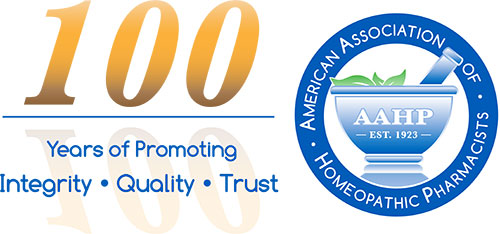Changes are Coming to Product Labels
By Alvin J. Lorman, AAHP counsel
August 1, 2017
Changes are coming to your products’ labels. Not only are there changes to the Homeopathic Pharmacopeia of the United States (HPUS) on the horizon, but our association’s Board of Directors is expected to make its soon-to-be-adopted new advertising disclaimer mandatory on labels as well. And there’s a wild card in the game: the possibility that the pending allopathic over-the-counter (OTC) monograph reform legislation will trigger changes to indications in existing monographs. We’ll look at each of these in turn.
In 2015, the Homeopathic Pharmacopeia Convention of the United States began a major revision of its labeling document, which is now called Expanded Labeling Guidelines for homeopathic products. The main difference from existing labeling guidelines is how the active ingredients in combination products must be declared. For example, if you make a combination product that contains equal parts of three different homeopathic actives at the same dilution level, you will have to state something like, “Contains equal parts [Ingredient A] 3X HPUS, [Ingredient B] 3X HPUS, and [Ingredient C] 3X HPUS.” If your product contains unequal proportions, the label declaration would look something like this: “Contains [Ingredient A] 3X HPUS 60%, [Ingredient B] 3X HPUS 25%, and [Ingredient C] 3X HPUS 15%.” There are a few wrinkles in the new guidelines, so it is best to have a look at them on the HPUS website.
The new guidelines were scheduled to go into effect on March 31, 2017, but the HPUS Board delayed the effective date a year, to March 31, 2018, because of the expected change that will be required by the new AAHP disclaimer.
As previously reported, the Federal Trade Commission (FTC) late last year adopted a guidance document which asserts that, in the absence of clinical trial data, homeopathic drug claims must bear a prominent disclaimer that explains the nature of the support for the product’s claims. AAHP has had a disclaimer program in place for several years, but the FTC staff rejected it as insufficient to inform consumers of the nature of the support for homeopathic products. Rather than challenge the accuracy and legality of the FTC position, AAHP committed to creating and validating a new disclaimer that meets the FTC’s goals. Potential new disclaimers are now undergoing final testing. It is expected that when the Board adopts the new disclaimer (probably no later than next month), it will require its use on labels as well as in advertising, as the FTC has asserted jurisdiction over both categories.
While the FTC guidance was issued last year, we do not expect to see initial FTC enforcement aimed at labels; advertising is likely to be the initial target. AAHP hopes that the FTC will recognize that it takes quite a lot of time to revise and reprint hundreds, if not thousands, of labels. But once the new disclaimer is adopted, it is entirely possible that the FTC will take action against advertisers who do not employ a disclaimer.
A final wrinkle is that the U.S. Food and Drug Administration (FDA) and the Consumer Healthcare Products Association (CHPA) are seeking legislative changes to the procedures used in the OTC Drug Review. FDA considers the notice and comment rulemaking procedures to be too cumbersome, so it has not made many changes to existing monographs. If and when the legislation is adopted, there may be changes to the indications of some monographed products. While homeopathic drugs are exempt from the OTC Review, many homeopathic manufacturers follow the uses of allopathic monographs as a “safe harbor,” so any changes to those indications may result in changes to homeopathic labels as well.
The one thing that is certain is that the people who make and manage your labels are going to be busy this year.
